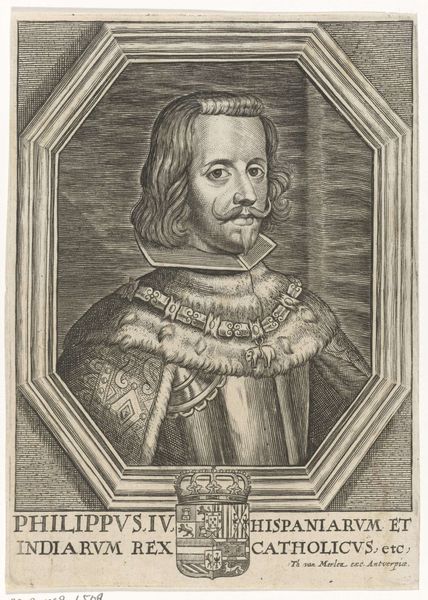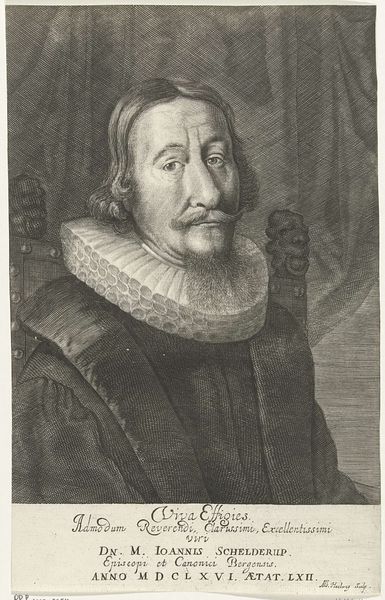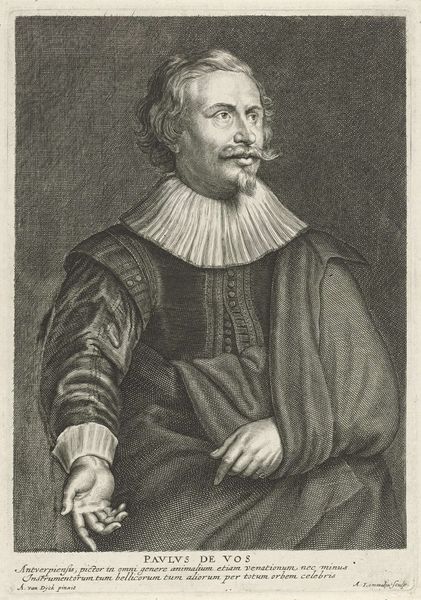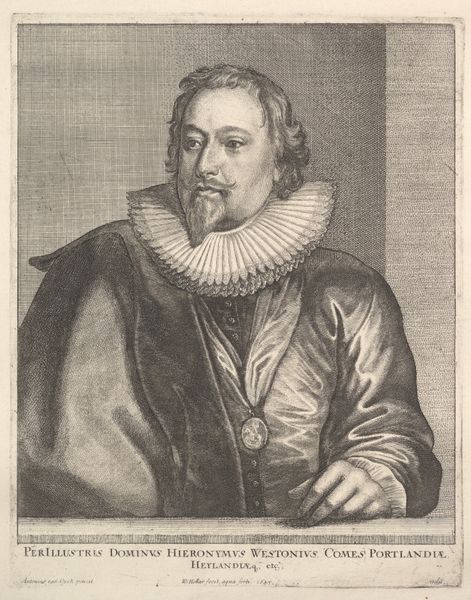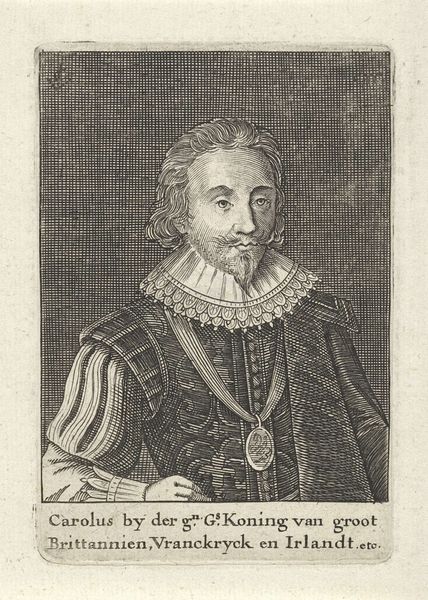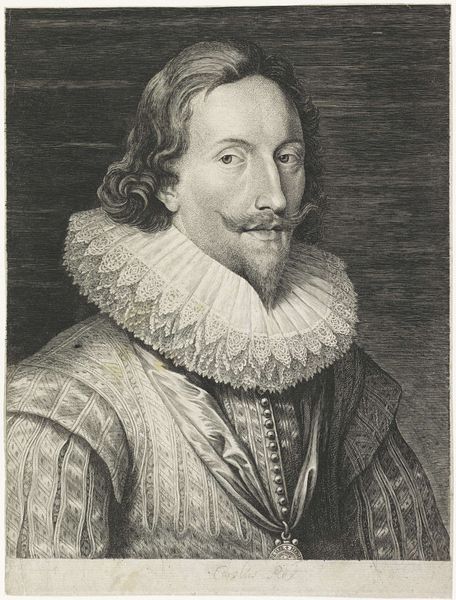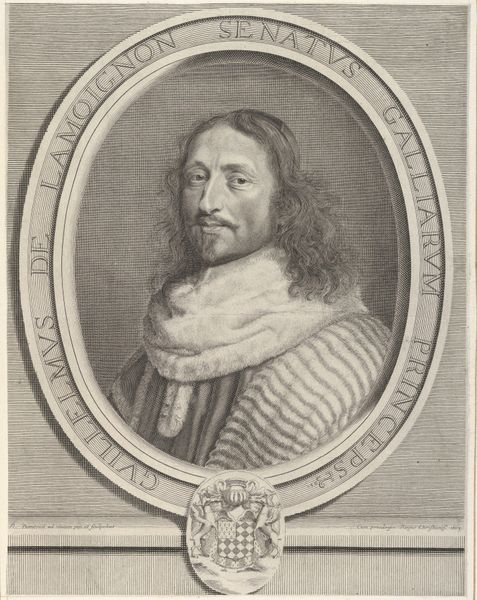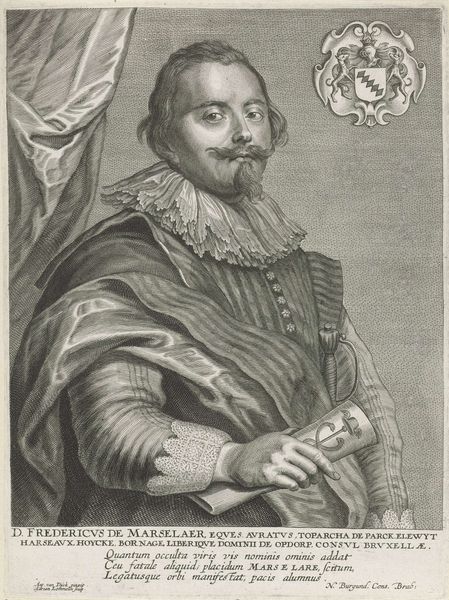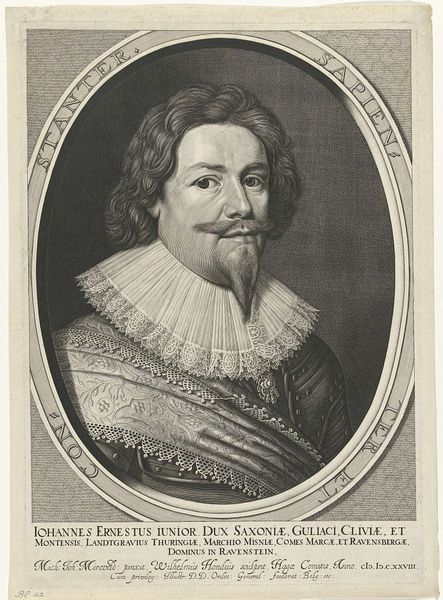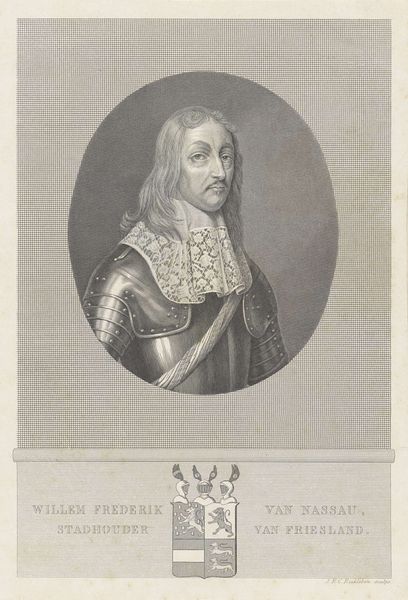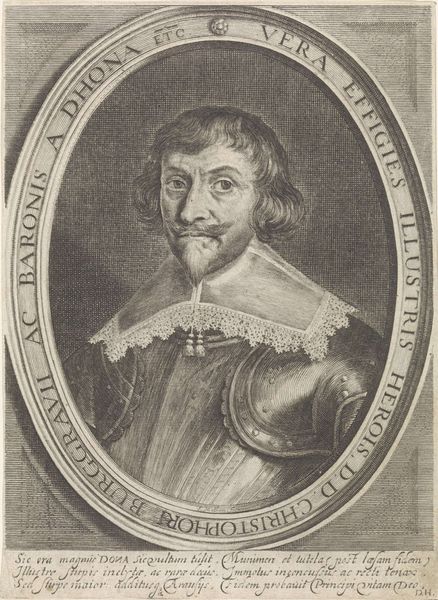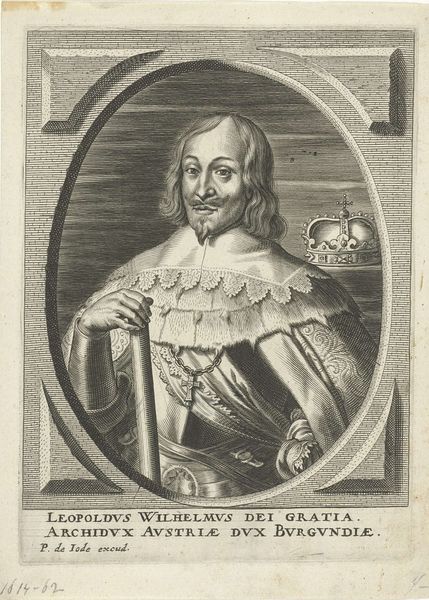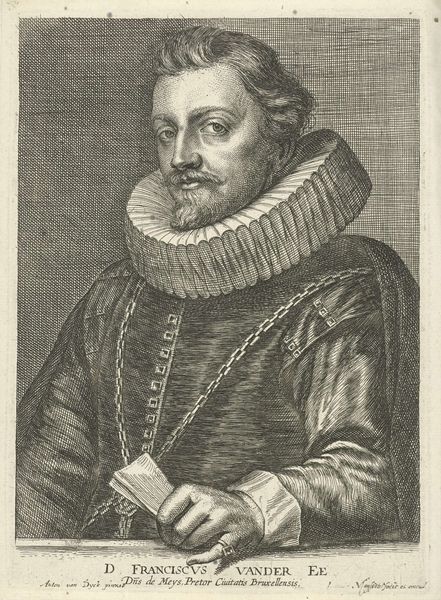
print, engraving
#
portrait
#
baroque
# print
#
charcoal drawing
#
figuration
#
line
#
history-painting
#
engraving
Dimensions: height 432 mm, width 319 mm
Copyright: Rijks Museum: Open Domain
Editor: Here we have Lucas Vorsterman's "Portret van Aloysius Contareno," made in 1628. It's a print, and it's quite striking – Contareno’s gaze feels very direct and a little imposing, especially with the fur and the rigid collar. How do you interpret this work, seeing it in its historical context? Curator: It's vital to understand portraiture like this as a statement of power and social status in the Baroque era. Consider Contareno's role as a Venetian orator, and think about who this image was for. How do you think prints like this circulated and who had access to them? Editor: I suppose they would have been for other wealthy, influential people. Maybe used to spread his image, almost like political propaganda? Curator: Exactly! Vorsterman wasn't just creating a likeness; he was constructing an image of authority. The Latin inscription, the coat of arms—everything is carefully curated to broadcast Contareno's lineage and intellect, reminding viewers of Venice's perceived cultural superiority during a tumultuous period. How might this portrait speak to the relationship between individual identity and political power in 17th century Europe? Editor: It really highlights the conscious crafting of an image to convey dominance and intellect. I hadn’t considered it in terms of political messaging so explicitly. Curator: Precisely! Understanding art as a tool for shaping perceptions allows us to see these historical figures beyond just their appearance, and understand their influence on the socio-political landscape of their time. Editor: I see that now; it’s fascinating to think about this portrait as part of a much larger game of image and influence.
Comments
No comments
Be the first to comment and join the conversation on the ultimate creative platform.
